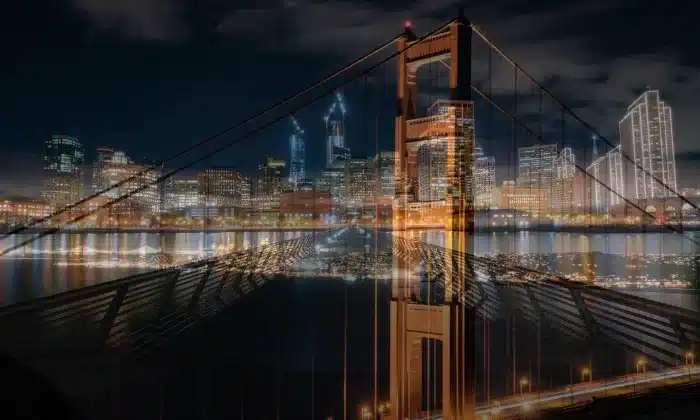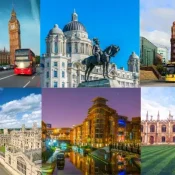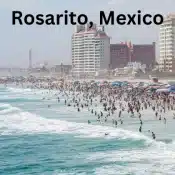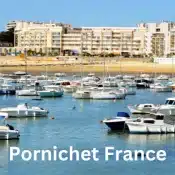
San Francisco’s Downtown Skyline
San Francisco’s Downtown Skyline
Find 7 best attractions such as Transamerica Pyramid, Salesforce Tower, One Rincon Hill, 181 Fremont, Coit Tower and Ferry Building.
San Francisco’s downtown skyline is a stunning mix of iconic skyscrapers, historic landmarks, and natural beauty.
Here’s an overview of some of the most prominent features that define the city’s skyline:
Transamerica Pyramid
The Transamerica Pyramid stands as an iconic symbol of San Francisco’s skyline, renowned for its distinctive shape and prominent position in the city’s Financial District. It embodies the city’s spirit of innovation, entrepreneurship, and forward-thinking urban planning. It is perhaps the most recognizable building in San Francisco’s skyline. Designed by architect William Pereira, the Transamerica Pyramid features a unique triangular shape, tapering as it rises towards its apex. This design was chosen to minimize the building’s shadow impact on the surrounding area. Standing at 853 feet tall, this triangular-shaped skyscraper has been a symbol of the city since its completion in 1972. The Transamerica Corporation, a financial services and insurance company, commissioned the building as its headquarters.
Salesforce Tower
The Salesforce Tower is a prominent feature of San Francisco’s skyline, standing as the city’s tallest building. Situated in the South of Market (SoMa) neighborhood, the Salesforce Tower occupies a prime location in downtown San Francisco, close to public transportation, dining, and cultural attractions.
At 1,070 feet tall, the Salesforce Tower is the tallest building in San Francisco and the second-tallest on the West Coast of the United States. Completed in 2018, this sleek, modern skyscraper dominates the skyline and serves as the headquarters of Salesforce, a leading cloud-based software company. It was designed by the architectural firm Pelli Clarke Pelli Architects, the tower boasts a sleek and contemporary design. Its glass facade and tapered form give it a distinctive appearance that sets it apart in the skyline.
Located on the top floor of the Salesforce Tower, Salesforce Park offers panoramic views of San Francisco and the surrounding Bay Area. Open to the public, the park provides a unique vantage point for visitors to admire the city’s skyline and landmarks.
One Rincon Hill
One Rincon Hill is a prominent residential complex located in the South of Market (SoMa) neighborhood of San Francisco. It is a pair of residential towers located near the eastern end of the Bay Bridge. The taller tower rises to a height of 641 feet, offering residents stunning views of the city, the bay, and the surrounding landscape. Completed in 2008, these towers have become iconic features of the skyline. One Rincon Hill consists of two residential towers: Tower One and Tower Two. Tower One, the taller of the two, rises to a height of 641 feet (195 meters), while Tower Two stands at 541 feet (165 meters). Due to their elevated position, the towers afford residents sweeping panoramic views of San Francisco Bay, the city skyline, and the surrounding hills. Designed by architectural firm Solomon Cordwell Buenz, the towers feature a sleek and contemporary design characterized by glass curtain walls and a slender profile. Their curved facades and distinctive shapes contribute to the visual appeal of the skyline.
181 Fremont
181 Fremont stands as a testament to San Francisco’s ongoing evolution as a global city, embracing innovation, sustainability, and urban living. It is a notable skyscraper in San Francisco, contributing to the city’s evolving skyline. 181 Fremont is a recently completed mixed-use skyscraper that stands 802 feet tall in the South of Market (SoMa) neighborhood offering commanding views of the city and the surrounding Bay Area. It was designed by architectural firm Heller Manus Architects, with structural engineering by Arup, the tower features a distinctive exoskeleton design. The sleek and modern design of the building reflects the contemporary architectural aesthetic prevalent in San Francisco’s skyline. 181 Fremont is designed with sustainability in mind and has achieved LEED Gold certification, reflecting its commitment to energy efficiency, environmental stewardship, and occupant comfort.
Coit Tower
Coit Tower stands as a beloved landmark in San Francisco, offering visitors a chance to immerse themselves in the city’s history, art, and natural beauty. From its perch atop Telegraph Hill, the tower provides a timeless vantage point from which to appreciate the splendor of the “City by the Bay.” It is not a skyscraper, however, Coit Tower is a historic landmark that offers panoramic views of San Francisco and its skyline. Located atop Telegraph Hill, this art-deco tower was built in 1933 and has become a beloved symbol of the city. Built in 1933, Coit Tower is a prime example of Art Deco architecture. It was constructed at the bequest of Lillie Hitchcock Coit, a wealthy socialite who left a significant bequest to the city of San Francisco upon her death in 1929.
Bay Bridge
The San Francisco-Oakland Bay Bridge often simply referred to as the Bay Bridge is not just a transportation link but also an integral part of the city’s skyline. The suspension span of the bridge, with its distinctive white towers, provides a dramatic backdrop to the downtown area, especially when illuminated at night. The Bay Bridge spanning a total length of approximately 8.4 miles (13.6 kilometers) and featuring both suspension and cantilever sections began in the early 20th century as a response to the growing need for a reliable transportation link between San Francisco and the East Bay. The Bay Bridge serves as a critical transportation corridor, facilitating the movement of vehicles, pedestrians, and cyclists between San Francisco and the East Bay.
Ferry Building
The Ferry Building, built in 1898 is situated along the Embarcadero waterfront, is both a historic transportation hub and a vibrant marketplace. Its clock tower, reminiscent of a European bell tower, adds character to the skyline and serves as a popular gathering spot for locals and visitors alike. The Ferry Building is not only a historic landmark but also a vibrant culinary destination and community gathering place in San Francisco. Whether shopping for artisanal products, dining at gourmet restaurants, or simply enjoying the waterfront views, visitors can experience the best of San Francisco’s food culture and waterfront lifestyle at the Ferry Building. Designed by architect A. Page Brown, the Ferry Building features a grand Beaux-Arts facade with a central clock tower reminiscent of a classical Roman column. Its elegant design reflects the architectural style popular during the turn of the 20th century.
In conclusion,
San Francisco’s skyline is also enhanced by its natural features, including the hills that rise and fall throughout the city and the picturesque backdrop of the Pacific Ocean and San Francisco Bay. These natural elements contribute to the unique beauty and charm of the skyline.
Together, these landmarks and features create a dynamic and diverse skyline that reflects San Francisco’s rich history, innovative spirit, and stunning natural setting. Whether viewed from afar or experienced up close, the city’s skyline never fails to impress and inspire.




